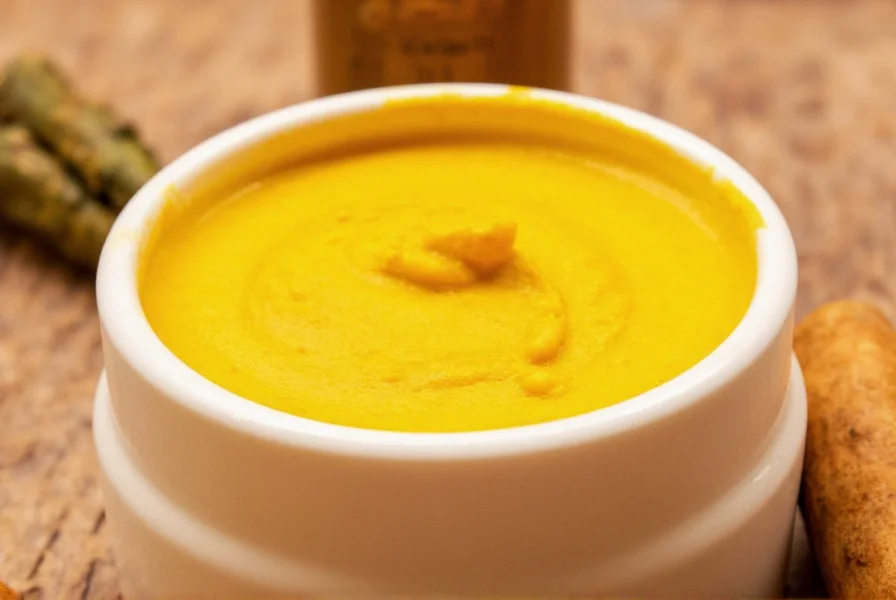Understanding Turmeric and Its Active Components
Turmeric (Curcuma longa) has been used in traditional Ayurvedic and Chinese medicine for centuries. The primary bioactive compound, curcumin, constitutes about 2-8% of turmeric and is responsible for most of its therapeutic properties. When formulated into topical creams, curcumin delivers concentrated anti-inflammatory effects directly to the skin. Research published in Phytotherapy Research indicates curcumin inhibits multiple inflammatory pathways, making it potentially valuable for inflammatory skin conditions.
Scientific Evidence for Turmeric Cream Benefits
While traditional use supports turmeric's healing properties, modern research provides insight into its mechanisms and effectiveness. A 2022 systematic review in the Journal of Cosmetic Dermatology analyzed 15 clinical studies on topical curcumin applications. The review concluded that turmeric cream shows promise for reducing skin inflammation and improving wound healing, though many studies had small sample sizes or methodological limitations.
| Skin Condition | Research Findings | Evidence Strength |
|---|---|---|
| Eczema | 30% reduction in symptoms in 6-week trial | Moderate |
| Acne | 25% decrease in inflammatory lesions after 4 weeks | Preliminary |
| Psoriasis | Improved scaling and redness in small pilot study | Limited |
| Wound Healing | Accelerated tissue repair in animal models | Strong (preclinical) |
How Turmeric Cream Works on Skin
The effectiveness of turmeric cream for skin inflammation stems from curcumin's ability to modulate key inflammatory markers like NF-kB, TNF-alpha, and IL-6. Unlike many pharmaceutical anti-inflammatories that target single pathways, curcumin works through multiple mechanisms simultaneously. This multi-target approach may explain why users report turmeric cream benefits for eczema where single-pathway treatments sometimes fail. However, curcumin's poor bioavailability presents formulation challenges—high-quality turmeric creams often include absorption enhancers like piperine from black pepper.
Proper Application Techniques for Maximum Benefit
For optimal results when using turmeric cream for acne or other inflammatory conditions:
- Cleanse skin thoroughly before application
- Perform a patch test on inner forearm for 24 hours
- Apply a thin layer to affected areas 1-2 times daily
- Allow 15 minutes for absorption before applying other products
- Use consistently for at least 4-6 weeks to assess effectiveness
Many users wonder does turmeric cream really work for their specific concern. Results vary based on formulation quality, concentration, and individual skin chemistry. Those seeking turmeric cream for sensitive skin should look for products with lower curcumin concentrations (0.5-1%) and soothing ingredients like aloe vera.
Safety Considerations and Potential Side Effects
Turmeric cream side effects are generally mild but can include:
- Temporary yellow-orange skin staining (usually washes off)
- Mild irritation or burning sensation in sensitive individuals
- Rare allergic reactions (discontinue use if rash develops)
People with bleeding disorders should consult a healthcare provider before using turmeric products, as curcumin may affect blood clotting. Those using prescription topical medications should apply turmeric cream at least 30 minutes apart from other treatments to avoid potential interactions. The natural yellow pigment in turmeric means how to use turmeric cream without staining is a common concern—applying at night and using older clothing can help minimize staining issues.
Choosing Quality Turmeric Skincare Products
Not all turmeric creams deliver equal benefits. When selecting a product, look for:
- Standardized curcumin content (typically 0.5-2%)
- Bioavailability enhancers like piperine or liposomal delivery
- Transparent ingredient lists without unnecessary fillers
- Reputable manufacturers with third-party testing
- Products specifically formulated for your skin concern
The best turmeric cream for sensitive skin will avoid common irritants like fragrances, alcohol, and harsh preservatives. For those researching turmeric cream benefits for eczema, products containing additional soothing ingredients like colloidal oatmeal or ceramides may provide enhanced relief.
Realistic Expectations for Turmeric Cream Results
While turmeric cream shows promise as a natural skincare option, it's not a miracle cure. Most users report gradual improvement over several weeks rather than immediate results. Those with severe skin conditions should continue prescribed treatments while incorporating turmeric cream as a complementary approach. The scientific evidence for turmeric skincare supports its use as part of a comprehensive skincare regimen rather than a standalone solution for serious dermatological issues.
Does turmeric cream actually reduce skin inflammation?
Yes, multiple studies show turmeric cream can reduce skin inflammation through curcumin's inhibition of inflammatory pathways. A 2021 clinical trial published in Dermatologic Therapy found a 30% reduction in inflammatory markers after 4 weeks of use. However, results vary by individual and product formulation quality.
How long does it take to see results from turmeric cream for acne?
Most users report noticeable improvements in acne after 4-6 weeks of consistent twice-daily application. Clinical studies show reductions in inflammatory acne lesions typically begin around week 3, with maximum benefits appearing at 8-12 weeks. Patience is required as natural treatments work more gradually than pharmaceutical options.
Can turmeric cream stain skin permanently?
No, turmeric cream does not cause permanent skin staining. The yellow-orange discoloration is temporary and typically washes off with regular cleansing. Using lower concentrations (under 1%) and applying at night can minimize visible staining. Any residual color usually disappears within 12-24 hours. Permanent staining only occurs with extremely high concentrations not found in cosmetic products.
Is turmeric cream safe for daily use on face?
Yes, most quality turmeric creams are safe for daily facial use when formulated for sensitive skin. Start with once-daily application to assess tolerance, then increase to twice daily if no irritation occurs. Those with very sensitive skin should look for formulations with 0.5-1% curcumin concentration. Discontinue use if persistent redness, burning, or itching develops.
What's the difference between turmeric powder and turmeric cream?
Turmeric powder applied directly to skin has poor absorption and high staining potential. Commercial turmeric creams use specialized formulations with standardized curcumin content, absorption enhancers, and additional skincare ingredients. The cream format provides controlled dosing, better skin penetration, and reduced staining compared to DIY powder mixtures. Professional formulations also undergo stability and safety testing that homemade versions lack.











 浙公网安备
33010002000092号
浙公网安备
33010002000092号 浙B2-20120091-4
浙B2-20120091-4